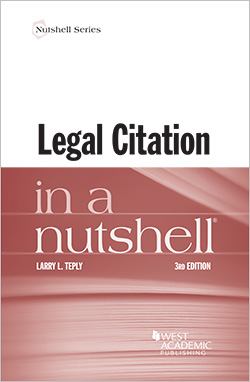"The central function of a legal citation is to allow the reader to efficiently locate the cited source."
Source: The Bluebook: A Uniform System of Citation (Columbia Law Review Ass'n et al. eds., 19th ed. 2010).
Additional Purposes:
1. Helps the reader to find more information or to locate the work cited.
2. Gives the writer credibility. Is the work well researched? Did you cite the critical authorities relevant to your issue?
3. Helps the writer avoid plagiarism. You must give credit to the creator of the information. Conversely, you cannot claim credit for something you did not create.
Common knowledge
Your opinions, your ideas and your work
Generally Accepted Facts
Citation help
Abbreviations
 Prince's Bieber Dictionary of Legal Abbreviations
by
Mary Miles Prince
Prince's Bieber Dictionary of Legal Abbreviations
by
Mary Miles Prince
 Princes Dictionary of Legal Citations
by
Mary Miles Prince
Princes Dictionary of Legal Citations
by
Mary Miles Prince

